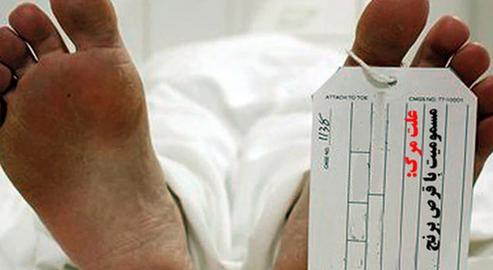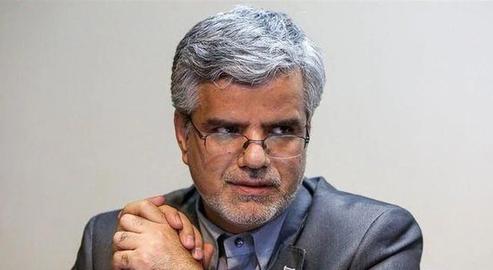On Saturday, April 17, 2021, multiple Iranian news agencies reported that 84 attempted suicides had taken place in just 24 hours in different parts of Tehran, of which 13 had ended in death.
The news was denied by the head of Iran's Social Emergency Services shortly after its publication. Mahmoud Aligou insisted the figures were not correct and the number of calls to emergency services related to attempted suicides since March 23 had been fewer than 80.
It comes amid a year in which, following the outbreak of coronavirus, worsening economic and psychological pressures are thought to have severely damaged many Iranians’ mental health. The issue of attempted suicides has been reported near-daily in the media of late. Saba Alaleh, an Iranian psychologist, spoke to IranWire about how the situation might be addressed.
***
The mental health of many Iranians is more precarious than ever after 12 months of Covid-19 and deepening economic hardship. Though official figures are patchy and tenuous, the suicide rate is widely thought to have increased in Iran in the past year.
Taghi Rostamvandi, head of Iran’s Social Affairs Organization, recently announced that the number of suicides in Iran had increased by five percent last year. According to him, in 2020-2021, an average of 15 people attempted suicide every day.
Saba Alaleh, a psychologist, told IranWire that last Saturday’s shocking reports in Iranian media needed to be examined “from several angles”.
"The news did not include information about the 84 people’s lives and conditions,” she said. “We always take into account psychological factors when discussing suicide, but other economic, political, cultural, genetic and psychological phenomena also play a role. In general, suicide is the product of living in an unstable situation."
Short-term difficulties and challenges, she said, were not as damaging as long-term, ongoing instability. “Continued instability over time. and for a long time. may bring the person to this point because it increases the feeling of insecurity. Even before the outbreak of the coronavirus, many Iranian citizens did not have a stable living condition. Feelings of insecurity have led to a sharp rise in suicide rates in recent years."
Take Poverty Seriously
Rising living costs, high inflation rates and a decline in people's ability to obtain the most basic necessities can all play a contributing role to mental ill-health and suicidal ideation. To make matters worse, last Saturday’s reports stated that of the 84 alleged suicide attempts, some 58 patients needed to be taken to hospital but 14 refused to go to hospital, which would almost certainly have been due to the associated costs.
"The factors that lead to attempted suicide in people are various,” says Saba Alehi, “and can include physical illness, mental illnesses, stressful events and problems, and family issues. Studies show that most of the family disputes in this period are due to economic problems and cause mental turmoil among family members. As a result, the numbers of both domestic violence and suicides due to family problems have increased."
Children “Misled” by Parents’ Choice of Words
The head of Iran's Social Emergency Services did not provide any further details on the under 80 suicides apparently reported to the organization since March 23. But reports released last year also show a marked decline in the average age of Iranians who reach this desperate point.
According to research by Iran’s Association for the Defense of the Rights of the Child, more than 250 under-18s attempted suicide between 2011 and 2020. This figure, however, only covers those cases that were reported in the media.
The Civil Registration Organization, meanwhile, has stated in a report that suicide is the fifth leading cause of death among adolescents and young people in Iran, and 3.89 percent of deaths in childhood and adolescence take place by the person’s own hands. The same report also said that 45 percent of these reported suicide attempts involved people between the ages of nine and 14, and 55 percent were between the ages of 15 and 18.
Ms. Alaleh said of this revelation: "Children do not have a full understanding of death and its irreversibility. Even in some adolescents, it is still not very complete. Children also imitate their parents: people using phrases like ‘Let me die, so as to be rid of you’ or ‘If you hurt me, I’ll kill myself’, or other similar remarks, gives the child the idea that this is the way to solve problems. Words issued in frustration need to be taken very seriously.”
Adults, she says, are clearly aware of the difference between talking about ending one’s life and acting on these words. But this is not always the case for children.
Violent Methods on the Rise; Iranian Media Must Act Responsibly
On the morning of February 2, 2021, an employee of a bank in Ilam province ended his life by using what was described in the media as a “hunting weapon”, after killing his wife and two children. Law enforcement officials attributed the familicide to “family problems”, while a local reporter in Ilam said the man’s severe depression, family quarrels and huge losses on the stock market had all played a role in the tragedy.
Various Iranian studies have indicated that more violent suicide methods – that is, methods other than a drug overdose and– are also on the rise in the country. Saba Alaleh says that families must have frank conversations about ideation and talk about any possible signs that someone close to them might be vulnerable.
But she also points out that an excessive focus on detailing the method of suicide in the Iranian media is unethical and should be avoided. “Suicide does not only affect the perpetrator; it also affects his or her family and relatives. The news of a suicide does the same. Media audiences are not just adults in stable living conditions. There is, therefore, a need for strict protocols for disseminating suicide-related news."
Take Every Threat Seriously
"The decision to commit suicide does not happen all at once,” Ms. Alaleh says. “It is a process that takes time. People who are in this situation, even if they do not speak up, may display a series of symptoms. For example, they might become distracted, fail to do the things they used to be good at, or change their day-to-day habits significantly.
“They might, for example, become indifferent to themselves, their appearance, their relationships and their emotions. They might abruptly cut off their relationships with those around them. Those around the person should be alerted by this. Sometimes just being in a safe circle and being actively listened to can save someone.”
For those who fear someone they know is in trouble, she says the best way to reach out is to listen attentively, without trying to offer solutions.
"Sometimes someone threatens to kill themself to achieve a goal or to pressure another person,” she says. But even in these cases, the threat must be taken seriously as the person making it will not be in in an emotionally stable place.
The Statistical Center of Iran’s yearbook for 2019 holds the last concrete data on suicide rates in Iran. According to this bulletin, 5,143 people – 3,626 men and 1,517 women – attempted suicide in the preceding 12 months. The reported occurrence of several deadly incidents on one day in the Iranian capital therefore ought to put the authorities on red alert.
Related coverage:
High Number of Suicides During University Entrance Exam Season
An Ongoing Tragedy: Suicides of Iranian Schoolchildren in Poverty
Series of Teen Suicides Shocks an Iranian City
Iranians Enter a New Century Poorer and Less Hopeful for the Future
visit the accountability section
In this section of Iran Wire, you can contact the officials and launch your campaign for various problems


























comments